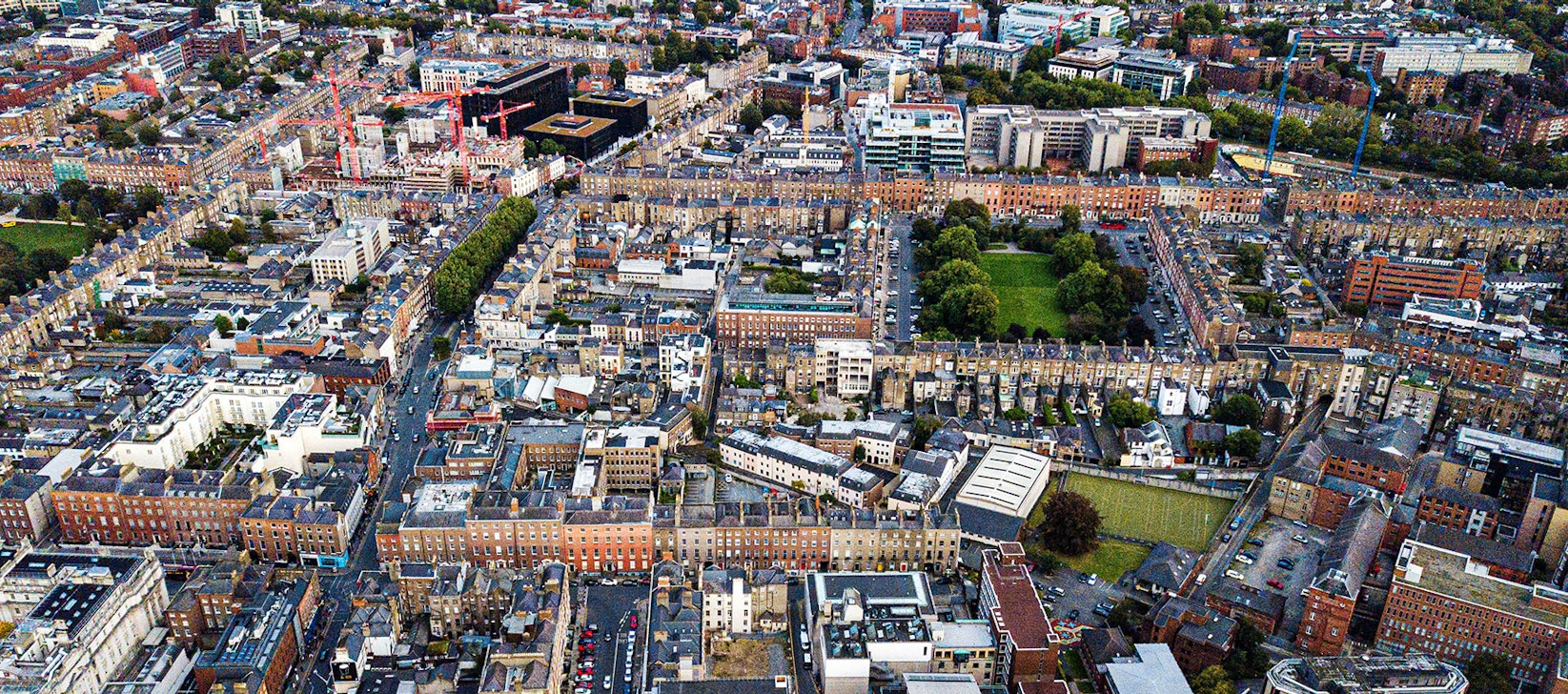The post-Covid economic fate of Dublin cannot be left to chance. Dublin must strive to be amongst the most liveable cities in the world.
Quality of life is critical to productivity and is a key part of a value proposition to attract and retain businesses and workers. Talent is mobile. It is not just businesses that invest in a region, people do too. As such, there is a strong interdependence between the planning, development and creation of an attractive environment and enterprise development.
The National Planning Framework has set Dublin the core objective of delivering compact, urban growth. This is to be achieved through urban infill and brownfield development. Dublin’s four local authorities must be
strongly committed to urbanisation polices, ending the pattern of pro-suburbanisation in practice. This will deliver a significant increase in density.
The Need for Density & Rejuvenation
We often hear commentators question the importance of density in urban centres. Transport infrastructure, the cost of living, sustainability, and the built environment are all affected by how space is utilised, and they play
a role in determining the quality of life. We know that higher density cities are more successful at concentrating productivity, innovation and creativity. Density helps enrich character, place and identity, boosting
attractiveness and overall competitiveness. Increased density will underpin Dublin’s economic future, but it will require investment and urgent delivery of essential infrastructure.
Parts of Dublin need to be rejuvenated, but they will also have to be reimagined to deliver the maximum economic and social benefits. For example, the long-term regeneration of the Dublin Docklands combines a vibrant business district with a sustainable neighbourhood. The development resulted in the inward investment of over €3.35 billion by the public and private sector. Over 40,000 people are employed in the Docklands. The regeneration of the area has made it a hub of economic
activity, while the mixed-use approach accommodates housing for 26,000 residents, cultural and recreational uses.
City Edge Opportunity
Another exciting opportunity for Dublin’s long-term growth in line with sustainable development principles is the City Edge project, an area four times larger than the Docklands. In the past a lack of collaboration between
local authorities led to unsustainable development patterns and sprawl. Institutionalising collaboration between local authorities, such as that between South Dublin and Dublin City, on long-term economic and spatial development is to be welcomed – though a shared vision backed by a clear plan, with timelines, on how it will be delivered and funded is needed.
Increased density will underpin Dublin’s economic future, but it will require investment and urgent delivery of essential infrastructure.
With 1,500 businesses and over 25,000 people currently employed in the area, it is critical that communication is central to the project to accommodate business concerns and to address any investment or operational concerns they may have. The buy-in of stakeholders must be achieved early in the project cycle. Business should not be solely considered as ‘landowners’, but major employers, manufacturers, and service providers. Afterall, we are all shareholders in Dublin’s future prosperity.





